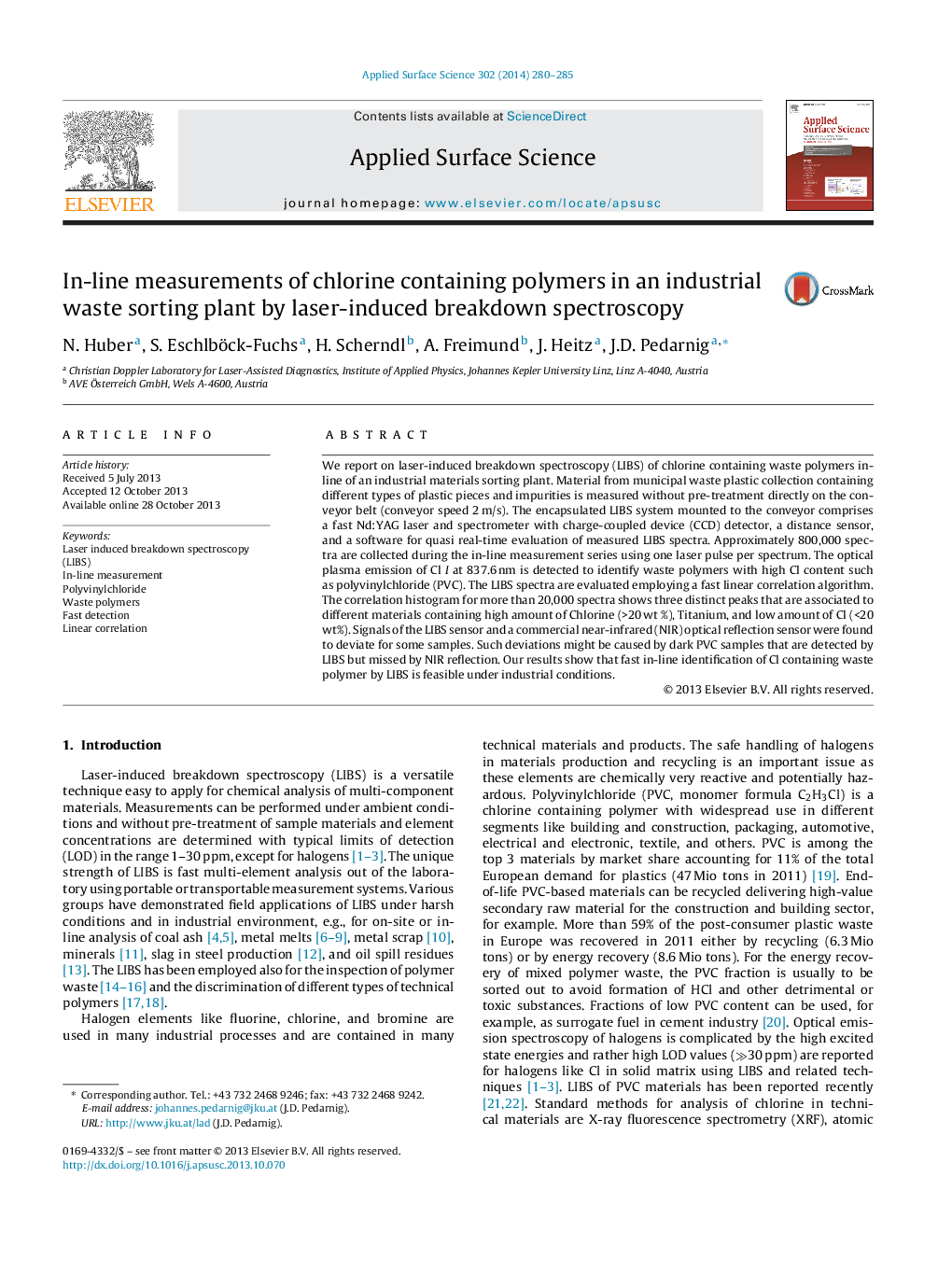| Article ID | Journal | Published Year | Pages | File Type |
|---|---|---|---|---|
| 5351642 | Applied Surface Science | 2014 | 6 Pages |
Abstract
We report on laser-induced breakdown spectroscopy (LIBS) of chlorine containing waste polymers in-line of an industrial materials sorting plant. Material from municipal waste plastic collection containing different types of plastic pieces and impurities is measured without pre-treatment directly on the conveyor belt (conveyor speed 2Â m/s). The encapsulated LIBS system mounted to the conveyor comprises a fast Nd:YAG laser and spectrometer with charge-coupled device (CCD) detector, a distance sensor, and a software for quasi real-time evaluation of measured LIBS spectra. Approximately 800,000 spectra are collected during the in-line measurement series using one laser pulse per spectrum. The optical plasma emission of Cl I at 837.6Â nm is detected to identify waste polymers with high Cl content such as polyvinylchloride (PVC). The LIBS spectra are evaluated employing a fast linear correlation algorithm. The correlation histogram for more than 20,000 spectra shows three distinct peaks that are associated to different materials containing high amount of Chlorine (>20Â wt %), Titanium, and low amount of Cl (<20 wt%). Signals of the LIBS sensor and a commercial near-infrared (NIR) optical reflection sensor were found to deviate for some samples. Such deviations might be caused by dark PVC samples that are detected by LIBS but missed by NIR reflection. Our results show that fast in-line identification of Cl containing waste polymer by LIBS is feasible under industrial conditions.
Keywords
Related Topics
Physical Sciences and Engineering
Chemistry
Physical and Theoretical Chemistry
Authors
N. Huber, S. Eschlböck-Fuchs, H. Scherndl, A. Freimund, J. Heitz, J.D. Pedarnig,
